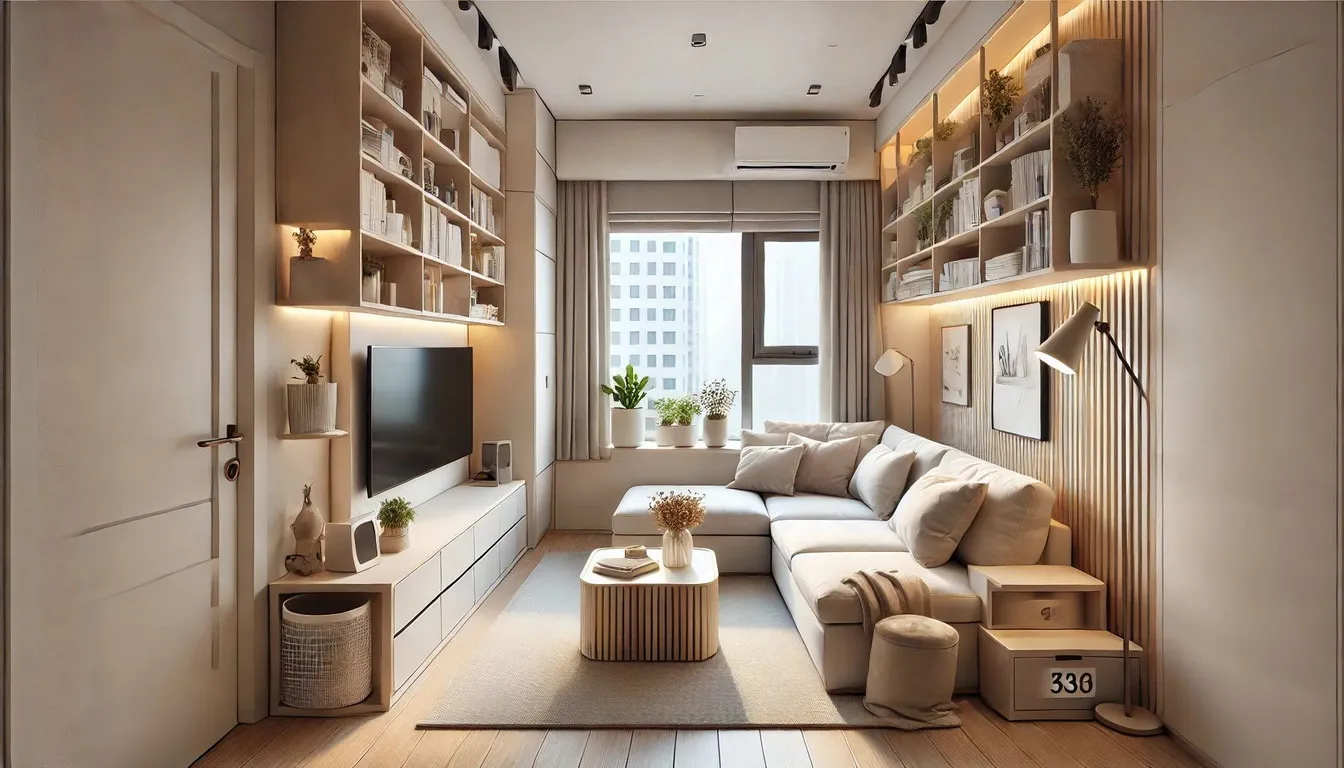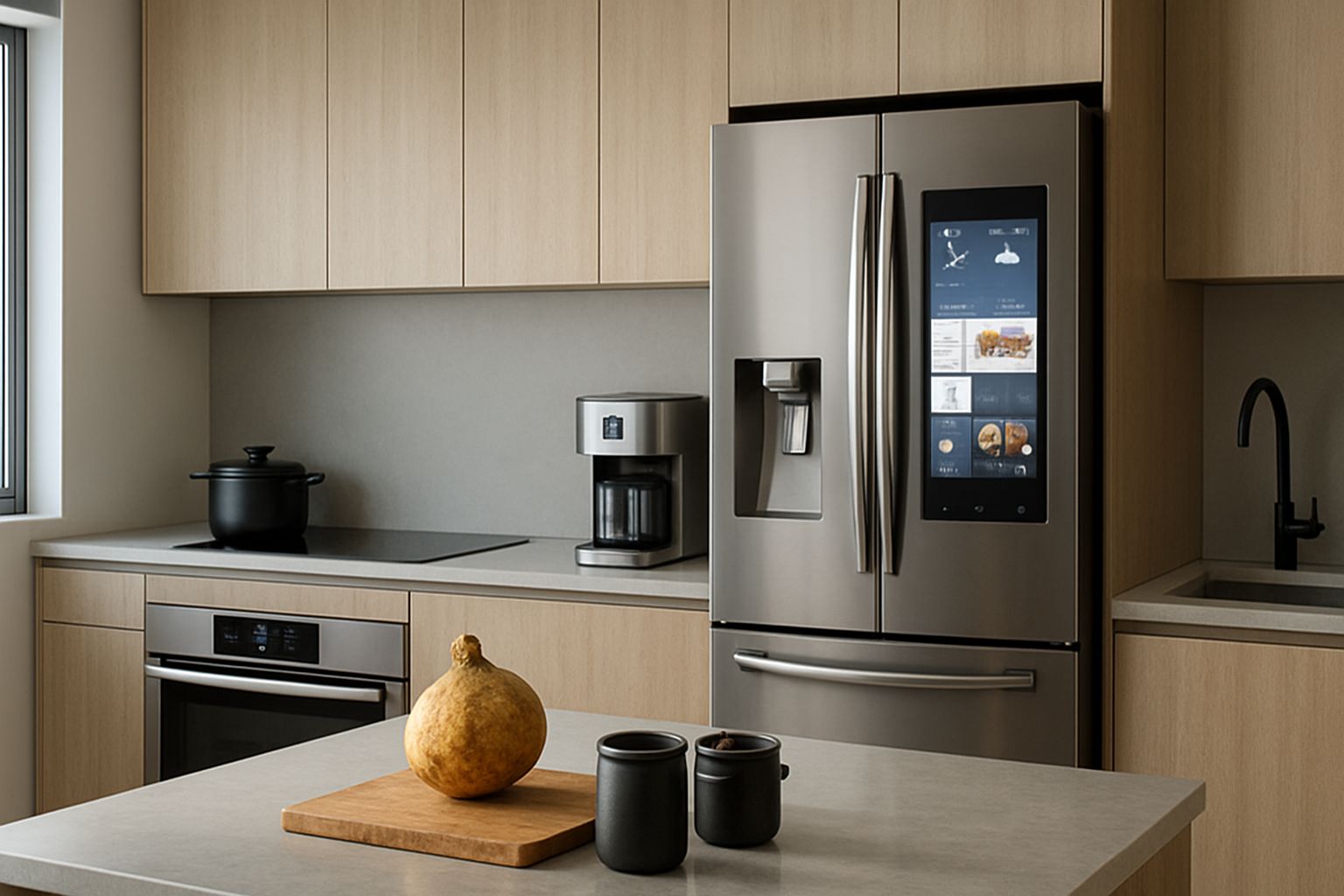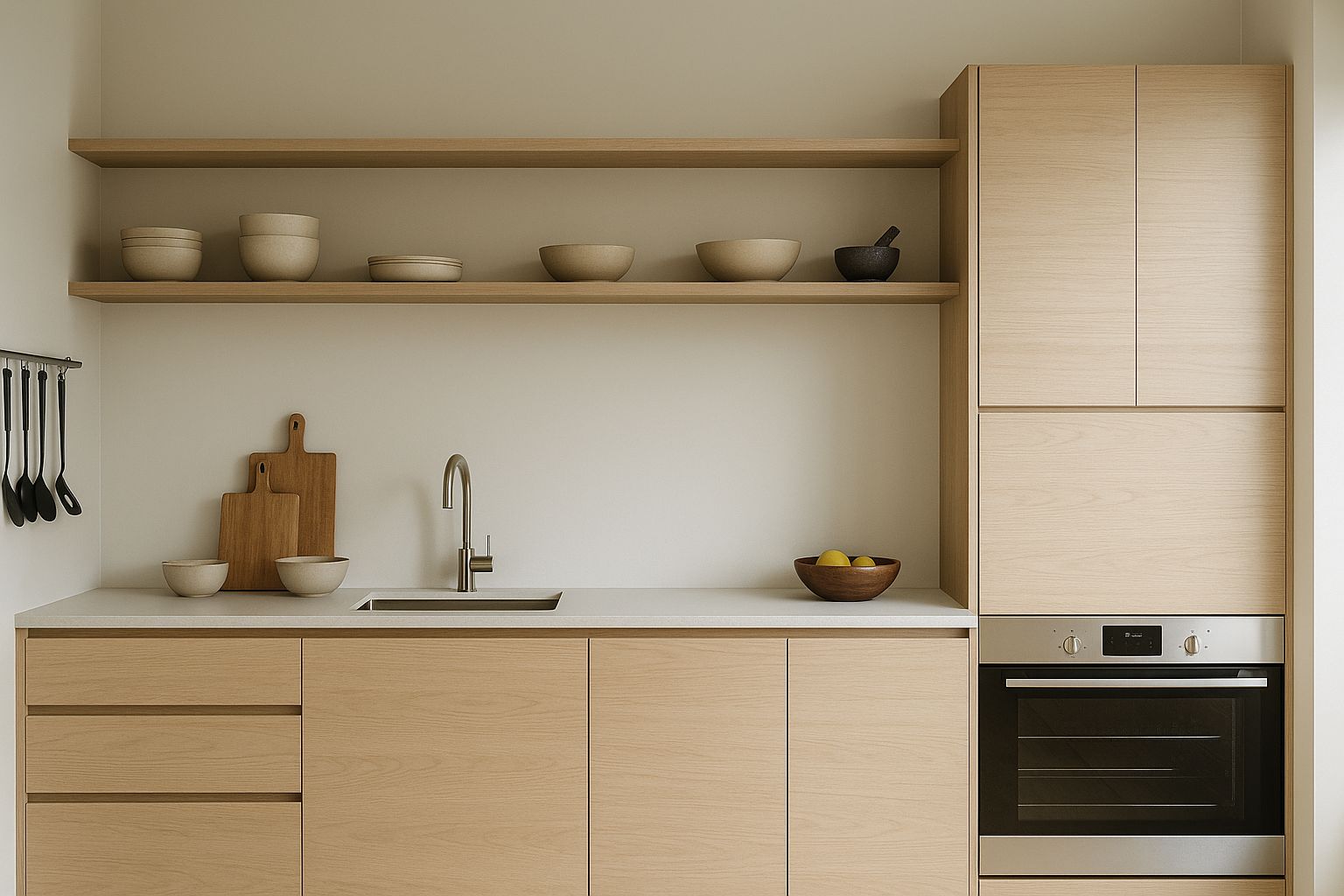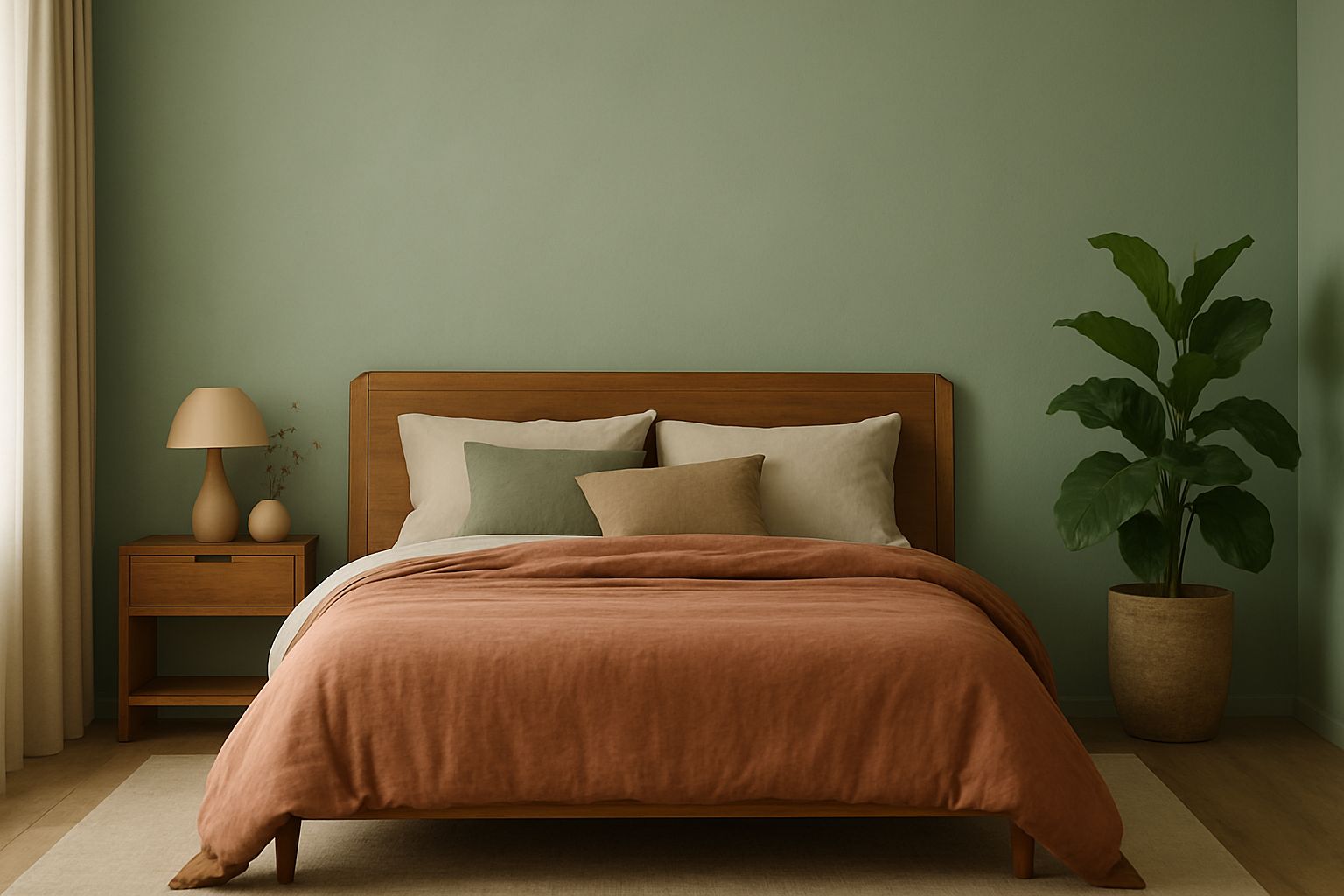Decorating a small living room can be a daunting task. Limited space requires careful planning and thoughtful choices to ensure that the room is both functional and stylish. Despite these challenges, small spaces offer unique opportunities for creativity and ingenuity. This article aims to provide practical and stylish solutions for decorating a small living room, helping you to maximize your space without compromising on aesthetics.
1: Planning and Layout
Assess Your Space
The first step in decorating a small living room is to thoroughly assess your space. Measure the dimensions of the room and take note of any architectural features that might influence your design choices, such as windows, doors, and built-in elements. Understanding the exact size and shape of your room will help you to make informed decisions about furniture placement and decor.
Create a Focal Point
In any room, a focal point draws the eye and provides a sense of structure. In a small living room, it’s essential to choose a focal point that enhances the room’s overall design without overwhelming the space. This could be a statement wall with bold artwork, a stylish piece of furniture like a unique coffee table, or even a feature like a fireplace. The key is to create a visual anchor that adds interest and draws attention.
Consider Traffic Flow
Ensuring smooth traffic flow is crucial in a small living room. Arrange your furniture in a way that allows for easy movement throughout the space. Avoid blocking pathways with bulky items and strive to create clear lines of sight. This not only makes the room feel more spacious but also enhances its functionality.
2: Furniture Selection
Opt for Multifunctional Furniture
In a small living room, every piece of furniture should serve multiple purposes. Look for items that can double up on functionality, such as sofa beds, ottomans with storage, and foldable tables. These pieces help you to save space and provide practical solutions for everyday living. For example, a sofa bed can serve as seating during the day and a guest bed at night, while an ottoman with hidden storage can be used for seating, a footrest, and a place to store blankets or magazines.
Choose Lightweight and Slimline Pieces
Bulky furniture can make a small living room feel cramped and cluttered. Instead, opt for lightweight and slimline pieces that provide comfort and functionality without taking up too much space. Look for sofas with sleek designs, narrow coffee tables, and chairs with slim legs. Transparent furniture, such as glass coffee tables or acrylic chairs, can also help to create a sense of openness.
Use Vertical Space
Maximizing vertical space is essential in a small living room. Tall bookshelves, wall-mounted storage, and floating shelves are excellent ways to add storage and display space without encroaching on valuable floor area. Consider installing shelves high up on the walls to draw the eye upward and create the illusion of a taller room. Additionally, wall-mounted cabinets can provide ample storage while keeping the floor clear.
3: Color and Lighting
Light and Neutral Color Palettes
Choosing the right color palette can make a significant difference in how spacious your living room feels. Light and neutral colors, such as whites, beiges, and pastels, can help to create a sense of openness and airiness. These colors reflect natural light, making the room appear brighter and larger. If you prefer a bit more color, consider using soft shades that blend seamlessly with your neutral base.
Strategic Use of Accent Colors
While neutral colors are great for creating a spacious feel, accent colors can add personality and interest to your living room. Use pops of color through accessories like cushions, throws, and artwork. This approach allows you to introduce color without overwhelming the space. For example, a few brightly colored cushions on a neutral sofa can create a lively focal point.
Maximize Natural Light
Natural light is your best friend in a small living room. Keep windows unobstructed to allow as much light in as possible. Use sheer curtains or blinds that can be easily drawn back to let the light flood in. If privacy is a concern, consider using frosted window film that allows light in while maintaining privacy. Mirrors are also an excellent tool for maximizing natural light. Place a large mirror opposite a window to reflect light and create the illusion of a larger space.
4: Smart Storage Solutions
Hidden Storage
Hidden storage is key to keeping a small living room tidy and organized. Look for furniture that doubles as storage, such as sofas with built-in drawers, coffee tables with lift-up tops, or storage ottomans. These pieces allow you to keep items out of sight but easily accessible when needed. For example, a storage ottoman can hold blankets, remote controls, and magazines, reducing clutter and keeping the room looking neat.
Creative Wall Storage
Wall storage is an excellent way to maximize space without taking up floor area. Pegboards, wall hooks, and floating shelves are versatile options for storing and displaying items. Pegboards can be customized with various hooks and shelves to hold everything from books to plants. Wall hooks are perfect for hanging bags, hats, or even small baskets. Floating shelves provide additional storage and display space for decor items, books, and plants.
Declutter Regularly
Regular decluttering is essential in a small living room. Keep the space tidy and organized by regularly purging unnecessary items. Adopt a minimalist approach to decor and only keep items that serve a purpose or bring joy. Regularly assess your belongings and donate, sell, or discard anything that no longer fits your lifestyle.
5: Decorative Elements
Minimalist Approach
In a small living room, less is more. Avoid overcrowding the space with too many decor items. Instead, focus on a few well-chosen pieces that add personality and style. A minimalist approach helps to create a clean and uncluttered look, making the room feel more spacious. Choose decor items that complement your overall design and provide visual interest without overwhelming the space.
Textiles and Fabrics
Textiles and fabrics are excellent tools for adding warmth and texture to your living room. Use rugs, cushions, and throws to create a cozy and inviting atmosphere. Opt for lightweight fabrics in light colors to maintain a sense of openness. Layering different textures, such as a soft rug with a chunky knit throw, can add depth and interest to the room.
Greenery and Plants
Plants are a fantastic way to bring life and freshness to a small living room. Choose small to medium-sized plants that fit the scale of your space. Place them on shelves, window sills, or use hanging planters to add greenery without taking up floor space. Plants not only enhance the decor but also improve air quality and create a calming environment.
Artwork and Wall Decor
Use artwork and wall decor to add personality and style to your living room. Choose a few well-chosen pieces that complement your overall design. Large artwork can create a focal point, while smaller pieces can be grouped to create a gallery wall. Keep the frames and artwork colors cohesive to maintain a unified look.
6: Practical Tips and Tricks
Multi-purpose Areas
Creating multi-purpose areas within your living room can help you make the most of your space. For example, you can create a reading nook with a comfortable chair and a small bookshelf in one corner. Use a foldable table that can be used for dining or working. By designing versatile areas, you can accommodate different activities without requiring additional space.
DIY Solutions
DIY solutions are often budget-friendly and customizable to your specific needs. Consider repurposing furniture, such as turning an old dresser into a TV stand with storage. Create custom shelves or storage solutions that fit perfectly in your space. DIY projects allow you to personalize your decor and make the most of every inch of your living room.
Regular Maintenance
Keeping your living room clean and well-maintained is essential in a small space. Regularly dust and vacuum to keep the room looking fresh. Address any maintenance issues promptly to prevent them from becoming bigger problems. A well-maintained living room not only looks better but also feels more comfortable and inviting.
Decorating a small living room requires careful planning and thoughtful choices, but it is entirely possible to create a stylish and functional space. By assessing your space, choosing the right furniture, using light and neutral colors, maximizing natural light, and incorporating smart storage solutions, you can make the most of your small living room. Add personality and warmth with decorative elements like textiles, plants, and artwork, and maintain a minimalist approach to avoid clutter. With these tips and tricks, you can transform your small living room into a cozy and inviting space that reflects your personal style.









